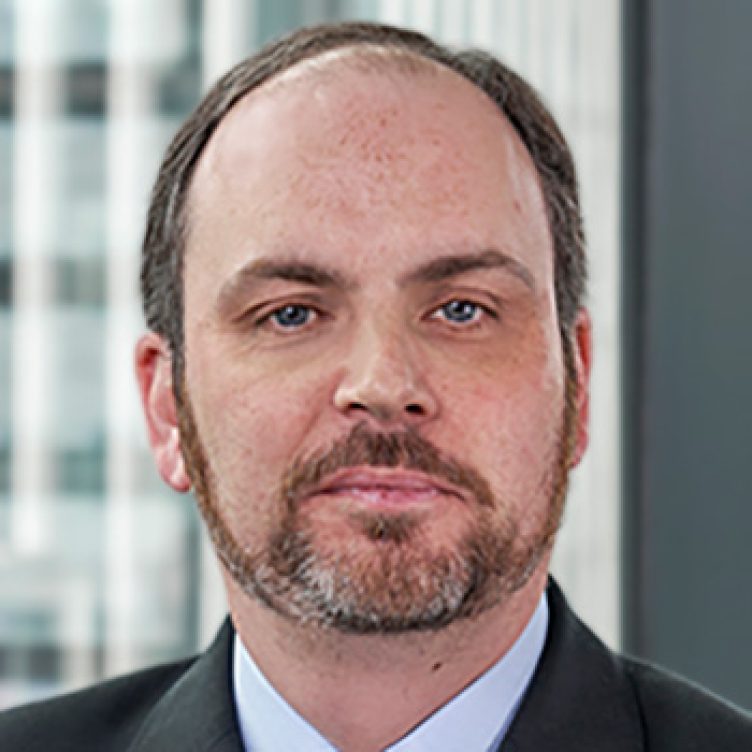This article covers issues faced by the authors of quantum expert reports, whether medical condition and prognosis reports or non-medical quantum reports. As with the first two articles in this series, it is not a case of teaching experts how to form their opinions rather a revision of the key points to consider for the report itself.
First principles
It is worth starting off by reminding ourselves of the basic principles enshrined within the Civil Procedure Rules (CPR) in respect of expert evidence. These are:
- The expert writes the report for the benefit of the court, and not for the party paying them to do so;
- The expert should only comment upon matters within their own expertise.
It should always be remembered that the CPR requires the court to allow expert evidence only where it is required. CPR 35.1 states:
“Expert evidence shall be restricted to that which is reasonably required to resolve the proceedings.”
The court will, in assessing damages, attempt to put the claimant back in the position they would have been in but for the injury suffered. That, in the case of serious or catastrophic injury, is not possible, so the court has to decide how best to bridge the gap. The court will look to apply what is effectively a reasonableness test to the assessment of damages, and it is that test, on the balance of probabilities, that experts should apply.
As lawyers, our intention is to get the most out of an expert’s view in order to advance the case on behalf of our client. We are, however, all answerable to the court. It is essential that experts give their proper view on the evidence, and that that opinion is justifiable. That means experts can expect a careful examination of their views. This benefits them as much as the claimant. As an expert once said to leading counsel in a difficult case of mine after being somewhat ‘robustly’ questioned in consultation: “I’d rather it was you, here, than by the other side’s QC in the witness box”.
Much, if not all, of that will be second nature, of course. The question then is what evidence is needed, how it should it be presented, and how will what is said help the court to come to its conclusions? In other words, how will your opinions assist the court to determine the issues before it, and how best to set them out to enable this to happen?
Structure
Reports should be, above all else, easy to read for the judge. There is an old saying that states you should not put anything in writing that you would not want read out in court. Experts ought to think the same way. Do I want a judge to pick up the report and know what to find and where to find it, and will I be happy for him or her to read it?
There are undoubtedly many ways to set out a report effectively. I do not profess to have the ultimate method, nor is this the only one, but having read a great many I have listed below what can be considered a sensible and effective structure. It is, broadly, as follows:
- Summary of instructions
- List of materials
- Narrative history
- Examination findings
- Review of key documents
- Review of lay witness evidence
- Review and comment on expert evidence, and
- Opinion.
Experts may find that their reports benefit from opening with an abstract or summary. In the case of quantum experts, where costings are to be provided, a summary of those costings and, where appropriate, examples (for example wheelchairs) can be useful. A glossary of key terms, particularly for medical experts, where those reading the report are not medically qualified, is also of great assistance.
A common approach, where the report is going to be a part of a tranche of reports, is to use a common date. Experts therefore need to be aware of when that date will be, and ensure that their report, and of course reference to the other reports that will be served at the same time, uses this date. The date will need to be updated as time goes on, as the report process may take several stages.
The expert report should clearly list the materials available when the report was written. This will most likely have been set out in the letter of instruction, and will have been added to as the case has progressed. Experts should not, in my opinion, state the date the instructions were provided, or refer to the letter, as this may make the document disclosable. Instead, a statement of what issues the instructing solicitor has requested is preferred.
Experts should be careful when listing the materials seen that the correct versions of witness statements or other materials are used. The practical reality is that anything referred to within an expert’s report becomes disclosable. For the most part that is not an issue as, if it was not to be referred to, it would not have been sent. Nevertheless, care should be exercised. Experts should be guided by those instructing them.
Narrative history and documentary evidence
Condition, prognosis and quantum expert evidence, as with liability expert evidence, requires an evidential basis. Whereas liability experts are invariably interested in the past, quantum evidence is often more the art of prediction. After all, if a claimant is 20 years of age and has a normal or near to normal life expectancy, an expert is going to have to come to a view as to the most likely outcome, not what will happen. This must all be based on information from which the expert can draw the important points.
There is a debate to be had as to how much narrative history and examination of records should be in an expert’s report before it becomes too long and cumbersome. My own view is that without a careful examination of the evidence, an opinion will be hard to justify. What is essential then is how to set out the evidence so that the opinions can be easily reached, without providing all history and no comment.
Medical experts will be concerned primarily with medical history, and relevant entries should be set out clearly and their relevance stated. Experts will be able to use their experience and professional judgment to predict the prognosis, but the evidential basis for it should be clearly set out.
Non-medical experts will likely have more regard to the records obtained from case managers, carers, therapists and local authorities, depending on the injury type and whether or not the claimant has access to funds. Experts will need to set out the key factors from the records and what progress has been made. There may be situations where experts will be faced with a claimant who has no access to funds, either as liability is in issue or there are significant contributory negligence issues to be considered. Such claimants will find it difficult to “road test” damages items. An obvious example of this will be care experts, where claimants will be constrained by what the state is prepared to provide, which is rarely sufficient. Experts faced with this scenario will need to predict based more upon experience; this should be explained clearly and the benefits set out in the event that funds become available.
Assessment and examination
Apart from some desktop quantum opinions, much of the expert’s view will be gleaned from their own examination or assessment of the claimant, often in their own home. Interviews with family members may also assist. Concise reference to the information obtained should be set out, making it clear where the information was obtained. Cross-referencing to witness statements may be necessary.
Evidence – lay witnesses
Experts are likely to find that there is much to be gained from witness statements. They give claimants and family members the opportunity to set out their take on the situation, and their wants and hopes for the future. They also give professionals and others who work for the claimant an opportunity to reflect on what has been done to date, what works and what does not. Experts will be able to glean much from that and they can test themselves during their own examination.
In terms of presentation, experts may find it more efficient to refer to statements given,. After all, the judge will have copies of those statements to hand. Reference by paragraph to completed statements may be the best approach, rather than wholesale quoting, save for crucial points.
Evidence – other experts
No doubt there will be interplay between medical experts and non-medical experts, and experts will need to know what their expert colleagues are saying. It is likely that in some cases experts will be reliant upon other experts for aspects of their own opinion. Consider, for example, the spinal injuries expert providing the other experts with the basis for the condition, on which they will comment on specific points (for example urology, orthopaedic surgery or similar).
One crucial point cannot be overstated and is worth repeating: the expert should stay within their own expertise and not stray into unfamiliar territory. We have all seen experts come unstuck by trying to opine outside of their speciality. If an aspect of the condition and prognosis requires a different expert, please say so. The legal team will consider how best to deal with that, but the expert should not compromise the rest of their opinion by commenting outside their own field. Experts should feel able to add such a recommendation in their report, if they feel it will assist.
There will be the need for comment on each other’s reports, as would be expected. In doing so, I would request that you do not provide numerical reference for direct quotes and paragraph numbers (if you must do them) until the other reports are finalised. I hold in mind the experience of having to provide an expert with line by line suggested alterations with the correct numbers, as all the other reports had changed and the expert had no time to do so themselves before service. That was several hours of my life I will not recover.
Literature and appendices
Before moving on to the opinion, it is worth a brief comment upon supportive material that an expert may want to adduce with their report.
Experts will often need to refer to literature or statistics that support their view. If these are referred to in the body of the report they ought to be available for the judge to see. The obvious place for such material is in an appendix at the end of the report.
Similarly, experts may find that there is a subject (for example, discussion of a specific feature of the condition such as post-traumatic epilepsy, syringomyelia or the risk of loss of a residual limb) that is statistically or descriptively bulky, such that further discussion of the basic features can be contained within an appendix. This is an effective way of keeping the detail present, but also keeping the main report clear and concise. It would also be the place to add a glossary, if one is required.
Opinion
The first point to make, and it is one that perhaps is not stated enough, is that in the civil courts the standard of proof required is the balance of probabilities. In other words, it is ‘more likely than not’. Experts thus do not have to be sure, nor do they have to be necessarily convinced. What they have to do is form a view on what is probable and reasonable in the circumstances, on the basis of the available evidence. Courts will make findings of fact, and an expert’s role is to comment on what that means for the claimant.
It is at this point that we return to the overriding principle at CPR 35.1: “Expert evidence shall be restricted to that which is reasonably required to resolve the proceedings.”
The opinion needs to assist the court to come to judgment. Opinions should therefore be set out in such a fashion as to allow the court to do so. It is suggested that conclusions and opinions with key headings, or features of presentation, is the clearest and most user-friendly approach. As said earlier, those who commissioned the report will want a judge to be able to find the crucial opinion as easily as possible.
Final thoughts
No doubt every expert has their own method, most likely tried and tested over many years and many hundreds of reports.
However in the age of costs budgeting, and more emphasis on deadlines and adhering to timetables laid down by the court, those instructing experts will appreciate the report they receive doing exactly what the CPR requires: assistance in resolving the issues before the court, and preferably from the first draft.
You can find further information regarding our expertise, experience and team on our Clinical Negligence pages.
If you require assistance from our team, please contact us or request a call back from one of our lawyers by submitting this form.
Media contact: Lydia Buckingham, Senior Marketing Executive, +44 (0) 20 7822 8134, lbuckingham@stewartslaw.com




